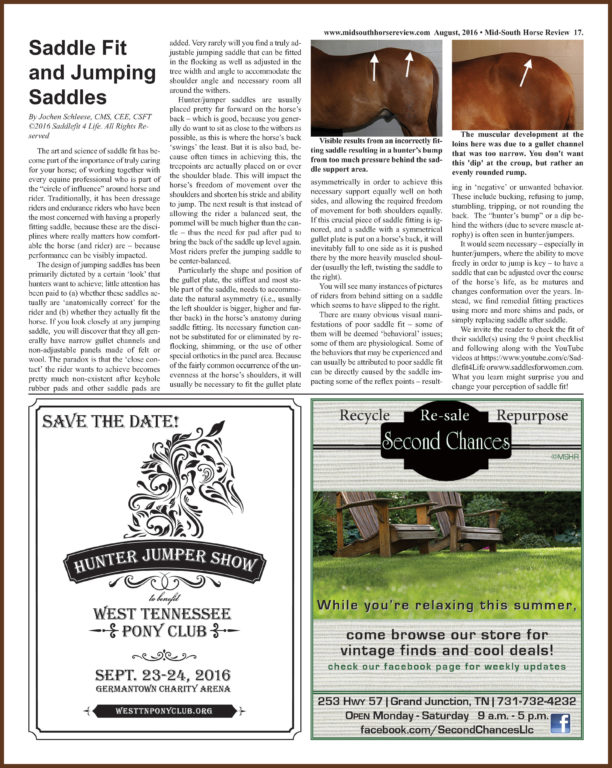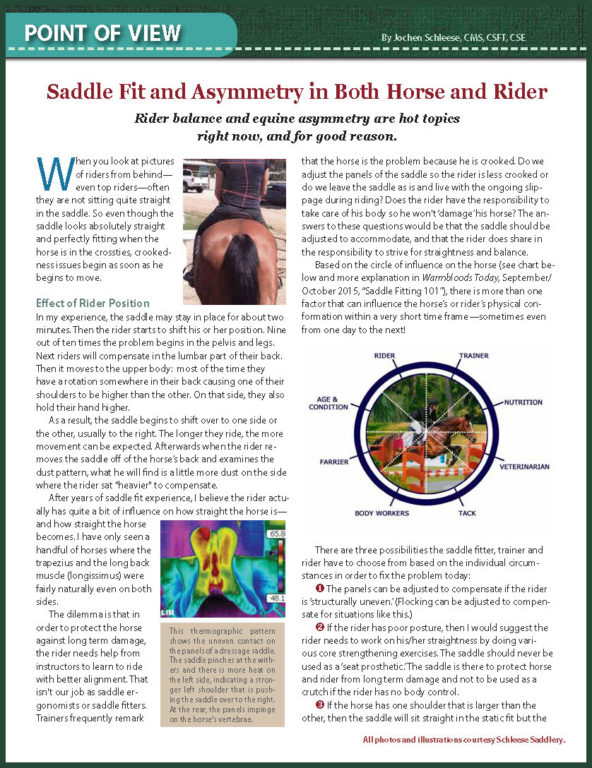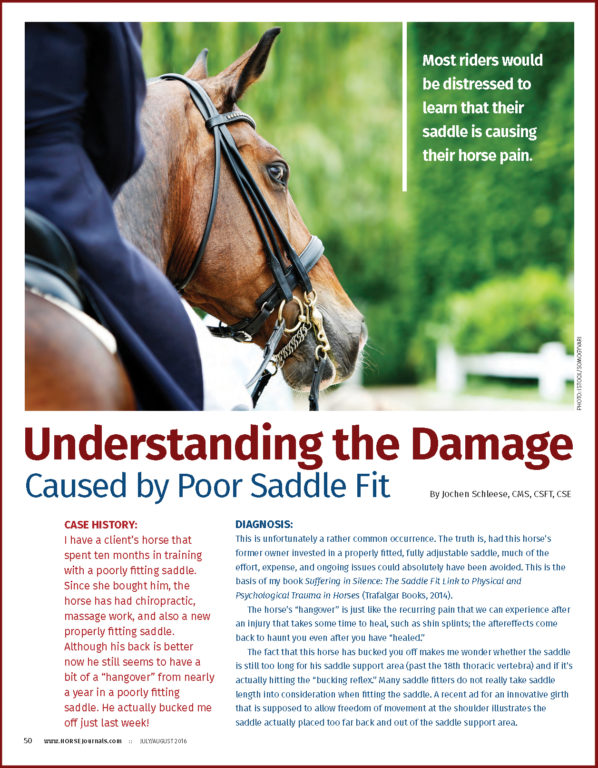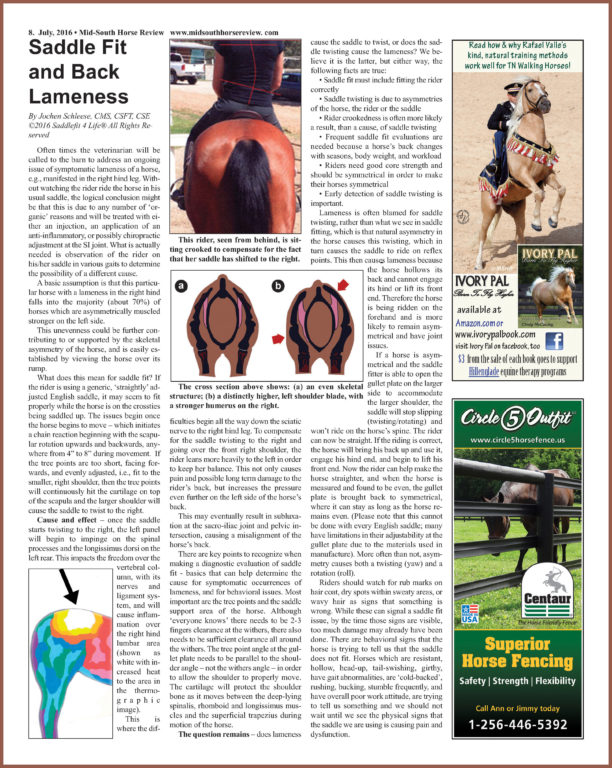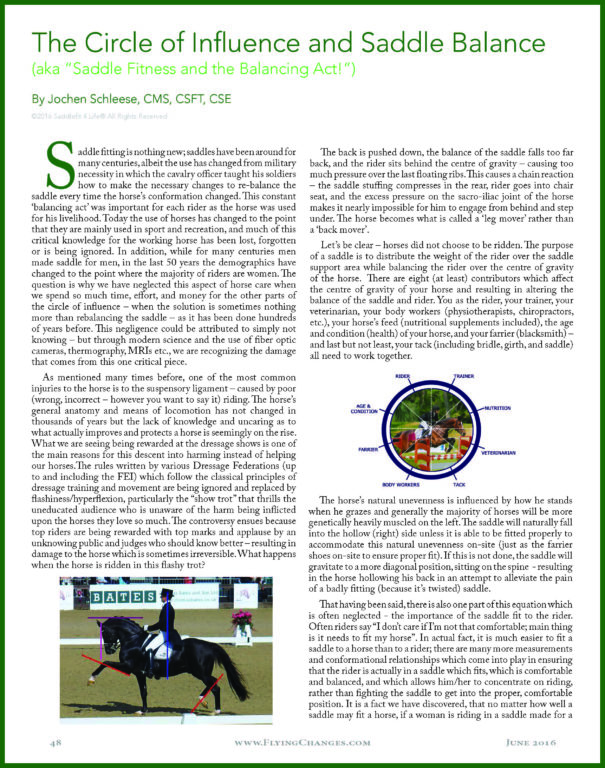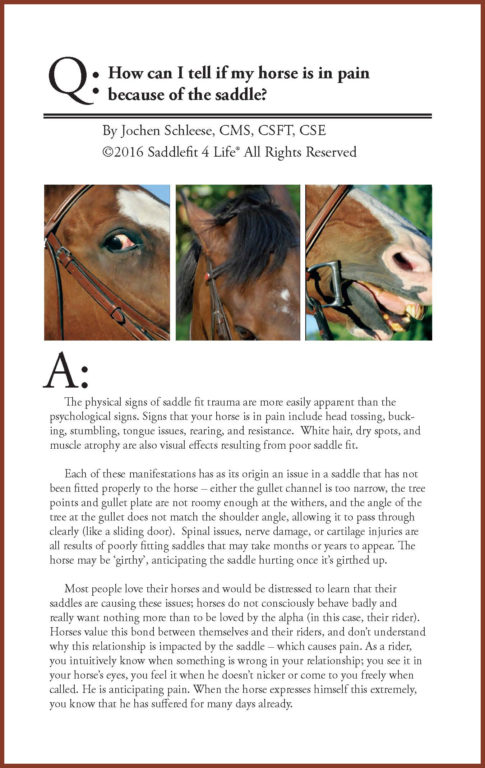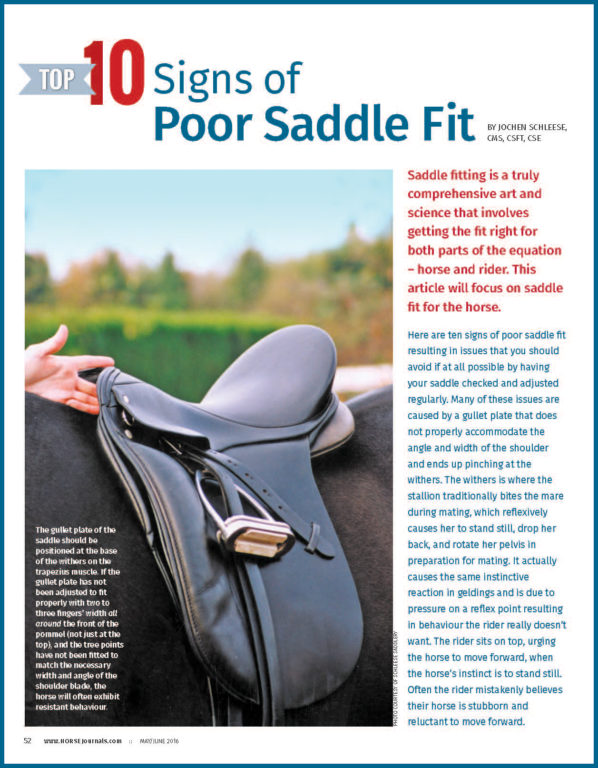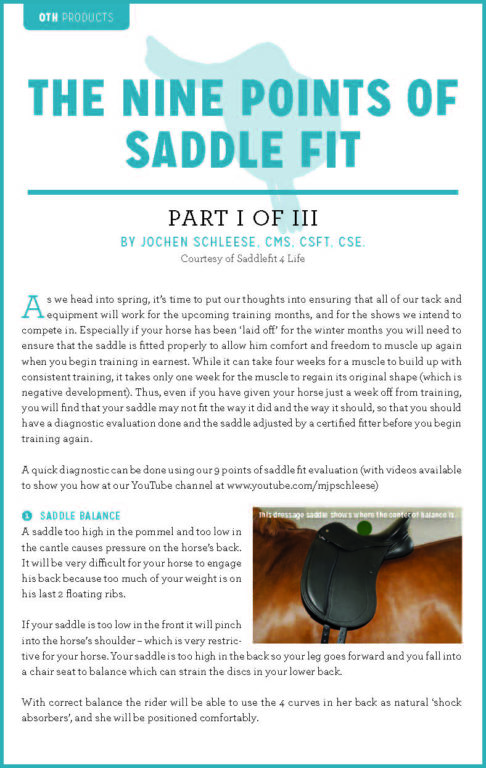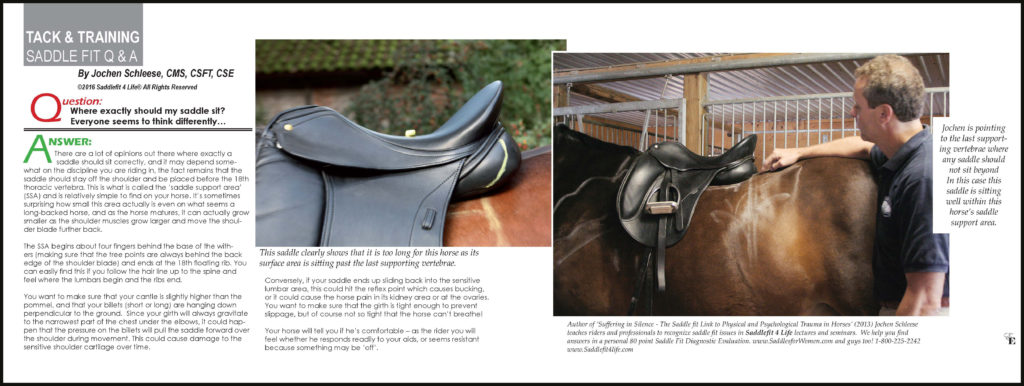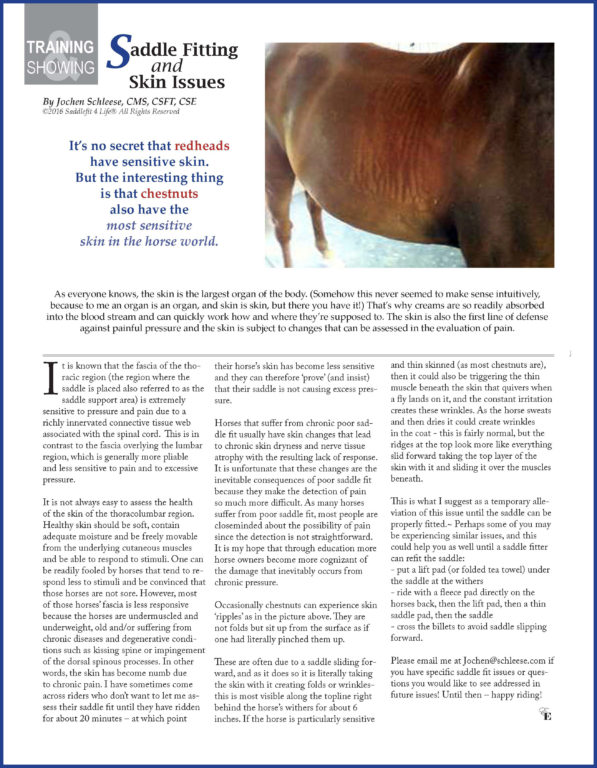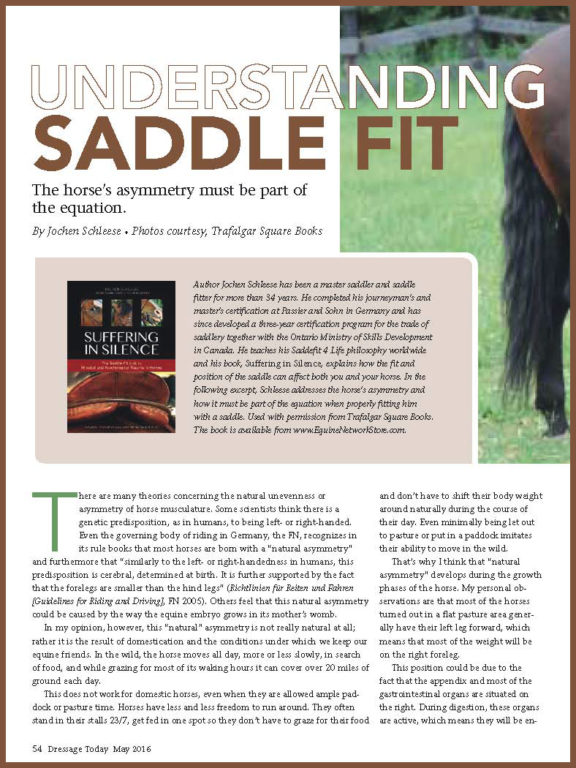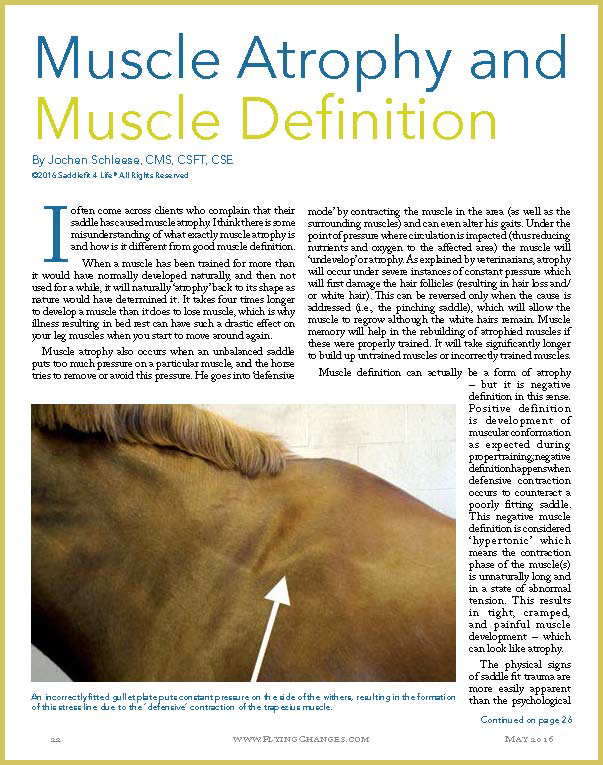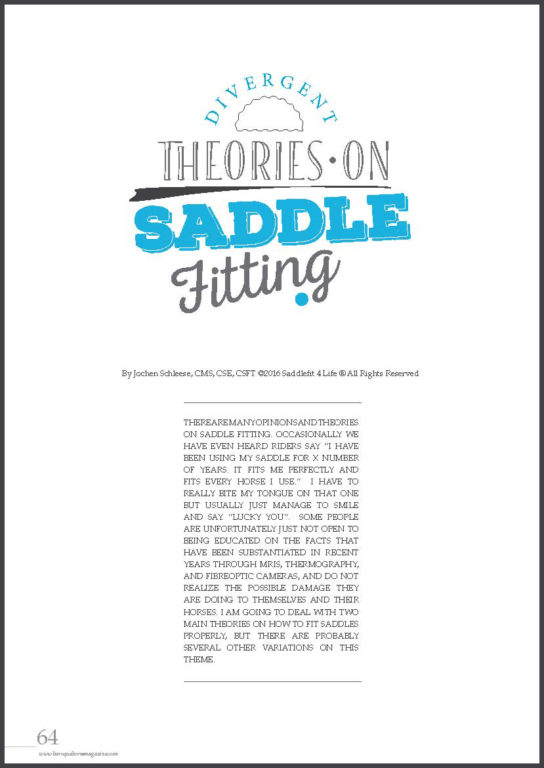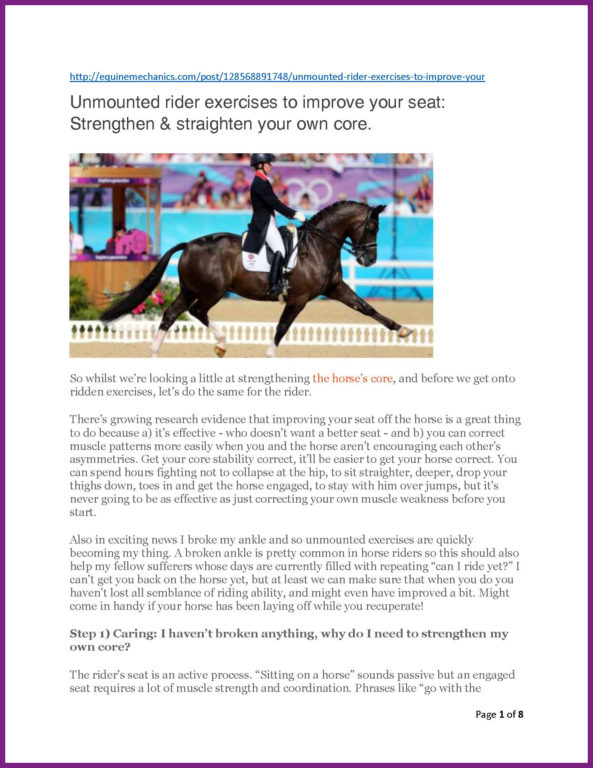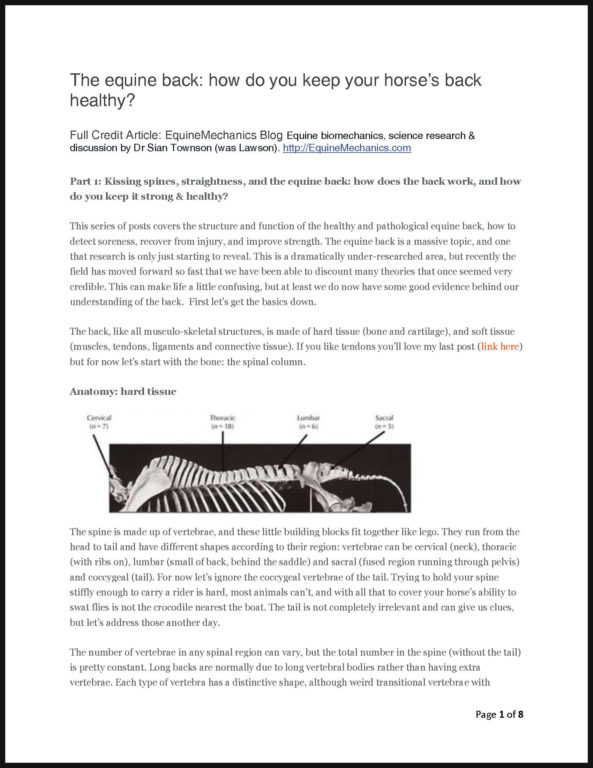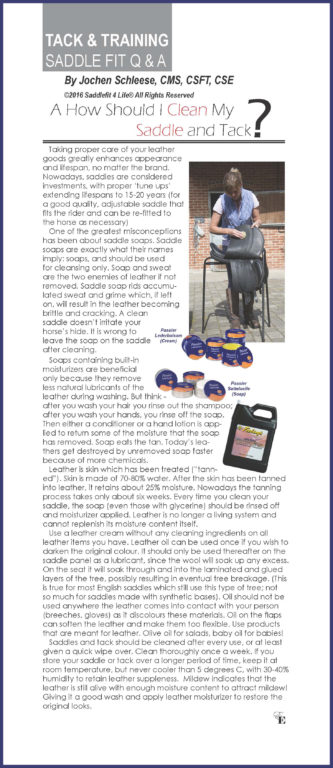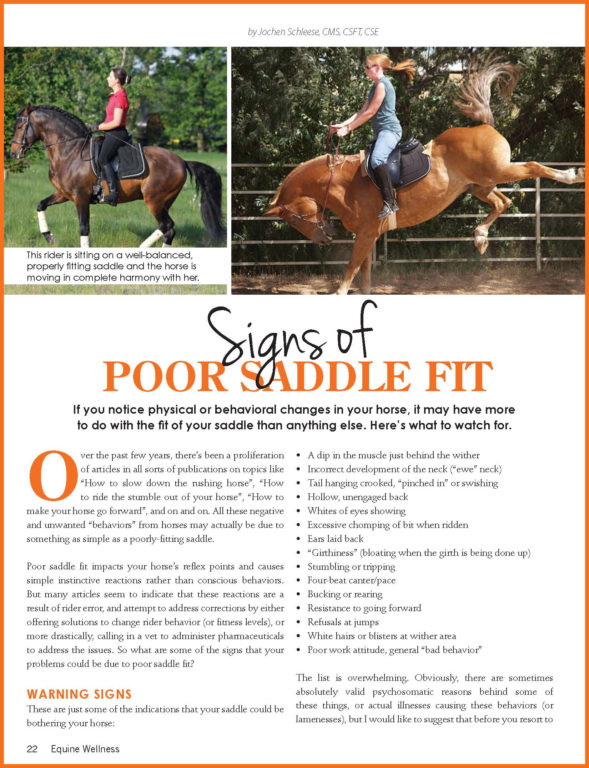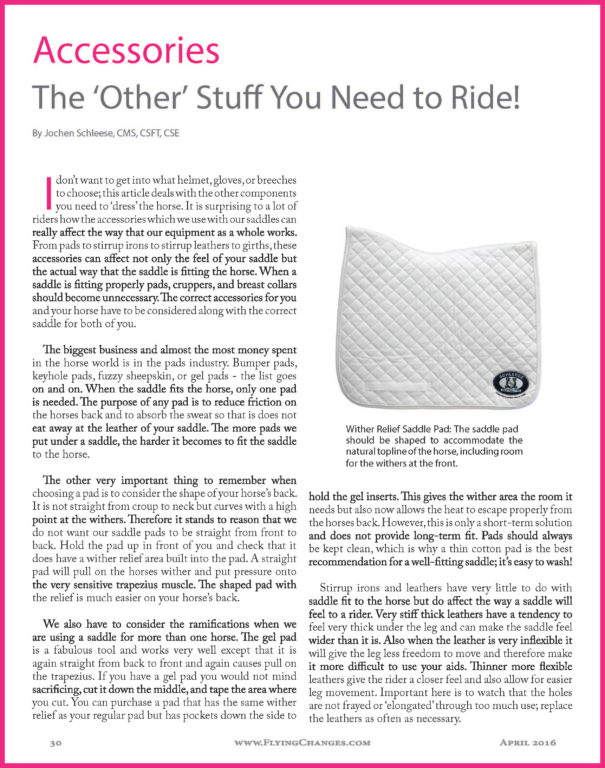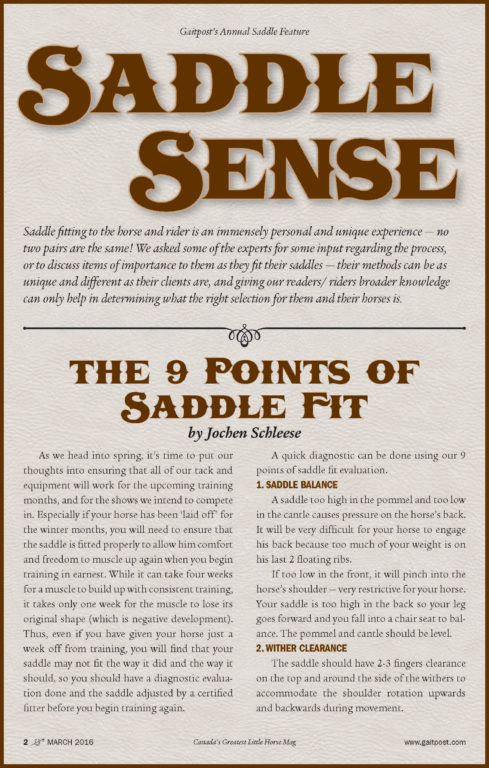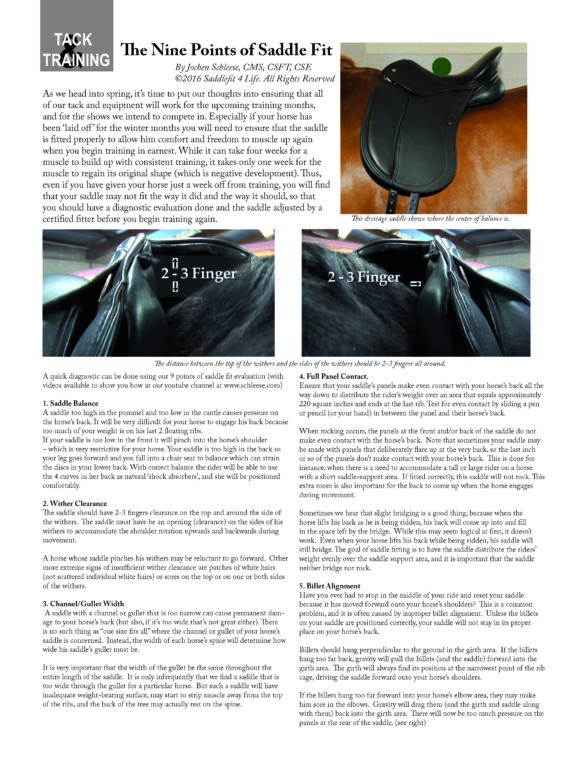- Mid-South Horse Review and www.midsouthhorsereview.com
The art and science of saddle fit has become part of the importance of truly caring for your horse; of working together with every equine professional who is part of the “circle of influence” around horse and
rider. Traditionally, it has been dressage riders and endurance riders who have been the most concerned with having a properly fitting saddle, because these are the disciplines where really matters how comfortable the horse (and rider) are – because performance can be visibly impacted. The design of jumping saddles has been primarily dictated by a certain ‘look’ that hunters want to achieve; little attention has been paid to (a) whether these saddles actually are ‘anatomically correct’ for the rider and (b) whether they actually fit the horse. If you look closely at any jumping saddle, you will discover that they all generally have narrow gullet channels and non-adjustable panels made of felt or wool. The paradox is that the ‘close contact’ the rider wants to achieve becomes pretty much non-existent after …

